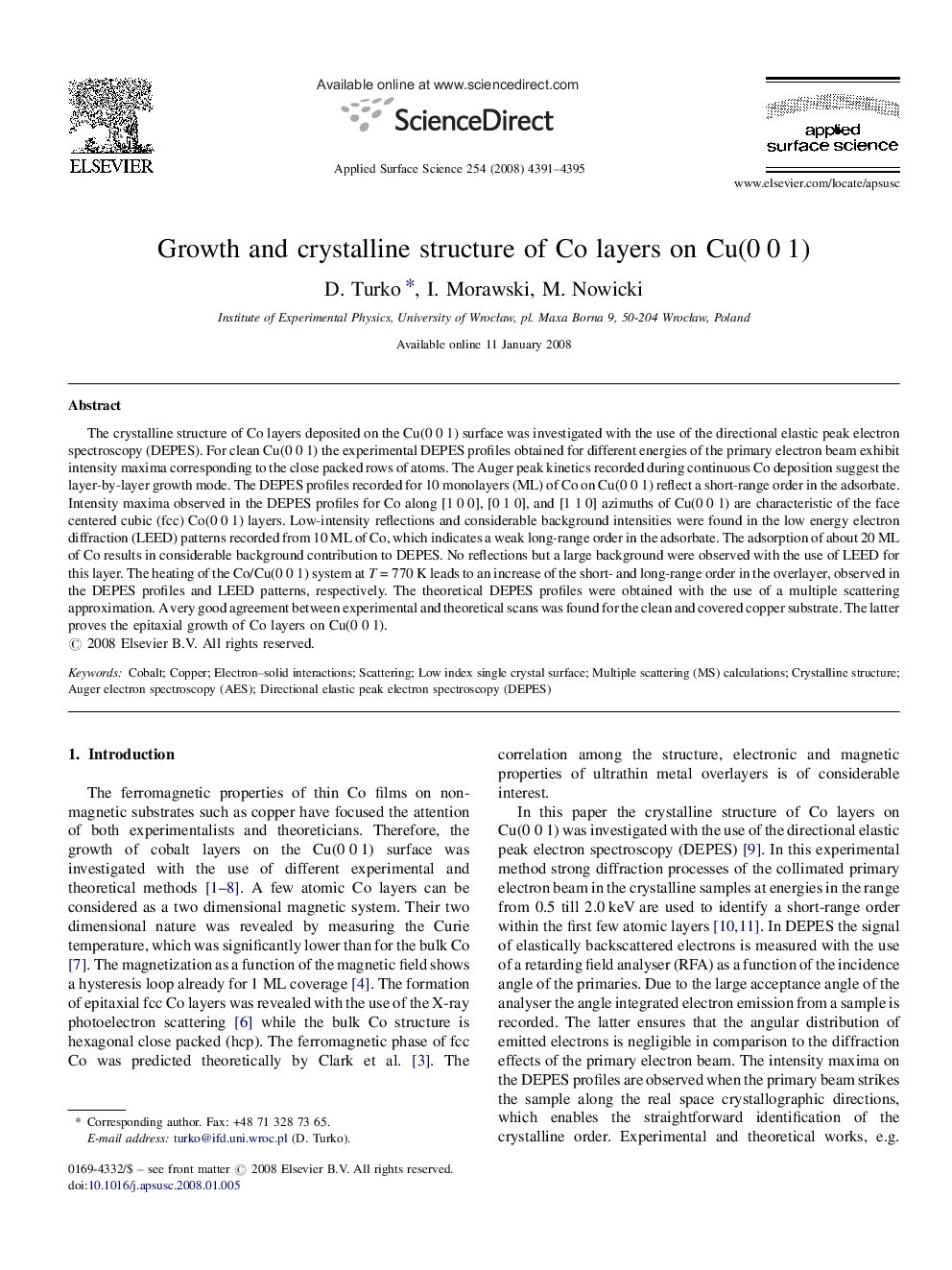| Article ID | Journal | Published Year | Pages | File Type |
|---|---|---|---|---|
| 5364263 | Applied Surface Science | 2008 | 5 Pages |
The crystalline structure of Co layers deposited on the Cu(0Â 0Â 1) surface was investigated with the use of the directional elastic peak electron spectroscopy (DEPES). For clean Cu(0Â 0Â 1) the experimental DEPES profiles obtained for different energies of the primary electron beam exhibit intensity maxima corresponding to the close packed rows of atoms. The Auger peak kinetics recorded during continuous Co deposition suggest the layer-by-layer growth mode. The DEPES profiles recorded for 10 monolayers (ML) of Co on Cu(0Â 0Â 1) reflect a short-range order in the adsorbate. Intensity maxima observed in the DEPES profiles for Co along [1Â 0Â 0], [0Â 1Â 0], and [1Â 1Â 0] azimuths of Cu(0Â 0Â 1) are characteristic of the face centered cubic (fcc) Co(0Â 0Â 1) layers. Low-intensity reflections and considerable background intensities were found in the low energy electron diffraction (LEED) patterns recorded from 10 ML of Co, which indicates a weak long-range order in the adsorbate. The adsorption of about 20 ML of Co results in considerable background contribution to DEPES. No reflections but a large background were observed with the use of LEED for this layer. The heating of the Co/Cu(0Â 0Â 1) system at TÂ =Â 770Â K leads to an increase of the short- and long-range order in the overlayer, observed in the DEPES profiles and LEED patterns, respectively. The theoretical DEPES profiles were obtained with the use of a multiple scattering approximation. A very good agreement between experimental and theoretical scans was found for the clean and covered copper substrate. The latter proves the epitaxial growth of Co layers on Cu(0Â 0Â 1).
